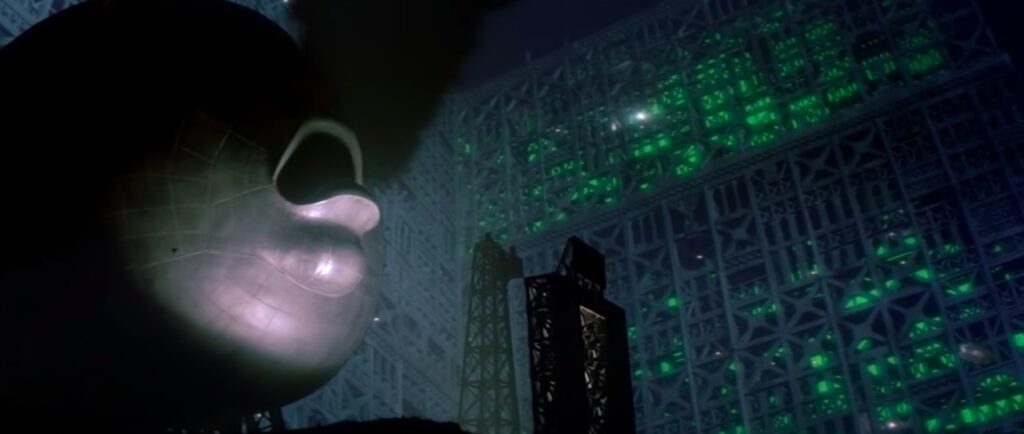
A Tale of Two Movies: Dune and the Art of Building Worlds
Alright, let’s talk about Dune—but not the spice, the sand, or the intergalactic politics. We’re talking about Dune through the eyes of an architect. Why? Because the movie isn’t just set on a barren desert planet; it’s a masterclass in architecture and world-building that uses design to tell a rich, immersive story.
Whether you’re drawn to the surreal, otherworldly landscapes of David Lynch’s 1984 version or the stunning, meticulously crafted visuals of Denis Villeneuve’s 2021 epic, both films showcase architecture in ways that go far beyond mere scenery. Every structure, from the towering, monolithic buildings to the intricate interiors, plays a crucial role in shaping the story and the world of Arrakis.
As architects and designers, we can appreciate how every detail—the scale, materiality, and form— creates a visceral experience that pulls us into the universe of Dune. It’s a movie where the architecture isn’t just part of the set—it’s a character in its own right, speaking volumes about the cultures, power dynamics, and even the harsh desert environment of the planet. So let’s explore how these two versions of Dune use architecture to build unforgettable worlds and how we, as designers, can draw inspiration from their bold, visionary approach to design.
Architecture in a Sandstorm: Building Worlds with Style

So, what does Dune have to do with architecture, really? It’s not just about creating stunning visuals (though, let’s be honest, those sand dunes are mesmerizing). Both films transform architecture into a character, an experience that defines the world these characters inhabit. Whether it’s the sleek, imposing structures of the 2021 film or the more surreal, labyrinthine designs in Lynch’s version, the way architecture is used in Dune plays a huge role in shaping how we perceive the universe itself.
1984: Surrealism Meets Sci-Fi Architecture

In Lynch’s Dune, architecture has a dreamlike quality. Think jagged edges, towering monoliths, and sprawling corridors that seem to go on forever. The sets have this hypnotic, almost uncomfortable feel—think of the massive, oppressive buildings of House Atreides, where every wall feels like it’s closing in on you. And let’s not forget the sandworm tunnels—they’re almost like architectural voids of their own, huge and dangerous, making us feel small in the face of such vastness.
From an architect’s point of view, Lynch’s Dune is a playground of experimental design, where form follows function in strange and beautiful ways. His vision of the world feels as otherworldly as the planet itself. The use of shapes and proportions creates a constant sense of scale—a reminder that we, as humans, are minuscule in the grand scheme of things. It’s like stepping into a living, breathing architectural dream (or nightmare, depending on how you look at it).
2021: Precision and Majesty
Then there’s Villeneuve’s Dune—a masterpiece that brings a sense of scale, elegance, and grandeur. Here, the architecture doesn’t just tell you a story; it makes you feel the weight of the universe. It’s sleek, sharp, and massive. The buildings are inspired by brutalism and modernism, with clean lines and vast spaces that convey power and isolation. Take the Atreides palace, for example: it’s monumental, yet it feels alien, almost cold. The desert planet’s architecture is minimal yet profound, reflecting the harsh, unforgiving environment it inhabits. The starkness of the buildings mirrors the barren landscape, creating a sense of both awe and dread.
What’s brilliant about Villeneuve’s approach is how he uses space—not just in the physical sense, but in terms of emotional and psychological space. His designs are cinematic in their scale, creating a feeling of isolation or transcendence depending on the scene. For architects, this film is a reminder that design is not just about the building itself—it’s about creating a space that evokes a specific mood, an emotion. Whether it’s the vastness of the desert or the intimacy of a royal chamber, every space feels carefully considered to tell a story.
The Architectural Impact: Dune’s Legacy in Design
So, why does this matter to us as architects? Because Dune isn’t just a sci-fi epic—it’s a lesson in how architecture can influence storytelling. It’s a reminder that our designs have the power to shape experiences, to influence how people feel in a space. Whether you’re designing for a post-apocalyptic world or an office building, the impact of architecture on mood and emotion is undeniable.
Both versions of Dune show us the power of architecture to create worlds. They challenge us to think about design beyond the physical, to consider how every curve, texture, and shadow can evoke something deeper. Whether it’s Lynch’s surreal, dreamlike world or Villeneuve’s monumental, majestic landscapes, both interpretations remind us that architecture is more than just buildings—it’s about creating environments that tell stories and evoke emotions.
In the End, It’s All About Building Dreams
So, what’s the takeaway for us, the architects and designers? Dune teaches us that architecture is a tool for dreaming—it’s about creating spaces that grab people’s attention, stir emotions, and, well… make them feel something. The stark contrasts in Dune—the vast, intimidating power of the Imperium buildings versus the humble yet sleek designs of the Fremen—are a prime example of how architecture can influence not just the aesthetics of a place, but the culture, the story, and even the people who inhabit it.
And let’s be honest—if we ever had a chance to design something on Arrakis, we’d want it to be as epic as those sandworm tunnels. Something that leaves you awe-struck and a little bit scared to step inside, but makes you want to anyway. Who says a building can’t be both a work of art and an adventure all on its own?



